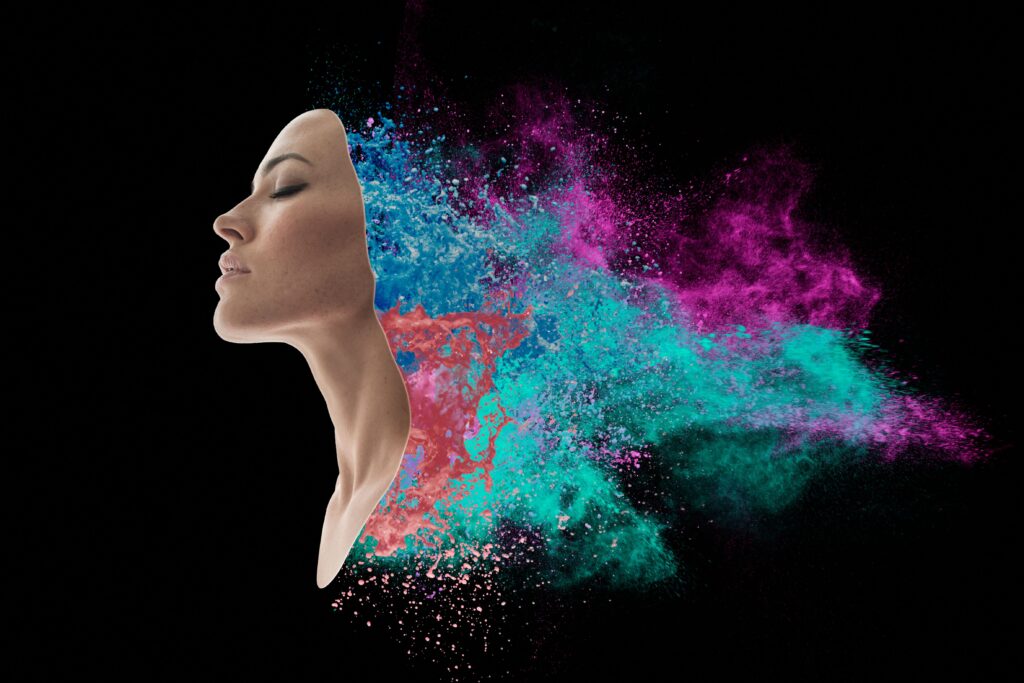Art has always been an expression of human emotions and feelings. Works of art, regardless of form or technique, have the ability to evoke a variety of emotions in the viewer. In this article, we will look at how contemporary art and traditional works of art influence our moods, emotions and feelings.
Table of Contents:
- Art vs. Emotions
- Contemporary Art and the Emotions
- Traditional Works of Art vs. Emotions
- How Can Art Affect Our Self-Care?
- Frequently Asked Questions
Art vs. Emotions
Emotions Evoked by Works of Art
The emotions evoked by works of art are extremely varied and deeply personal. Art, from ancient to modern times, has a unique power to reach the deepest recesses of the human heart and mind. Thanks to the variety of forms, techniques and artistic messages, works of art have the ability to evoke a wide range of emotions in the viewer. From joy and delight to sadness and reflection, they can appeal to our feelings in both direct and subtle ways. Through artistic expression, art becomes a bridge connecting the artist’s inner world with the viewer, provoking deeper thoughts, awakening the imagination and inspiring the discovery of one’s own feelings and reflections.
Joy and Delight
Works of art often evoke feelings of joy and delight in the viewer. The beauty and talent of an artist can be a source of constant fascination and admiration. Faced with exceptional creativity and artistic sensitivity, we can experience intense feelings of joy and delight, which, in addition, have a positive impact on our mood and outlook on life.
Sadness and Reflection
Some works of art can evoke feelings of sadness and melancholy. Paintings or sculptures with deep messages can make us reflect on life and the human condition. In fact, by showing the difficult aspects of the human experience, art can inspire us to reflect on values, the essence of existence and the mystery of human destiny. Feeling such emotions can also lead to a deeper understanding of oneself and the world, fostering personal and spiritual development.
Contemporary Art and the Emotions
New Emotional Challenges
The new emotional challenges posed by contemporary art admittedly often result from its innovative approach to form, content and message. Artistic experiments with techniques, materials and themes can provoke our thoughts and feelings. They can open doors to new areas of reflection and emotional experience.
Controversy vs. Emotions
Controversy is often an integral part of contemporary art, triggering discussions and debates on important social, political or cultural issues. Indeed, works that stir controversy have the potential to stimulate deep emotions, from surprise and outrage to interest and understanding. In addition, they can make us reflect on our beliefs, values and attitudes, helping to broaden our cognitive and emotional horizons.

Traditional Works of Art vs. Emotions
Classics vs. Feelings
Traditional works of art, such as paintings and sculptures by masters of past eras, are often considered a source not only of aesthetic pleasure, but also of deep emotions and spiritual experiences. Their unquestionable mastery and timelessness give them an extraordinary power to reach people’s hearts and minds, evoking a variety of feelings.
Beauty and Serenity
Be that as it may, when faced with classical works, we often experience feelings of beauty and tranquility. Harmonious compositions, precise proportions and perfect balance between elements make viewers experience inner solace and contentment. These works of art exude subtlety and elegance, making them a source of inspiration and admiration for many generations who admire their beauty and significance.
How Can Art Affect Our Self-Care?
The Therapeutic Role of Art
As we know, art plays a significant therapeutic role, acting as a tool to help improve our well-being and mental health. Meanwhile, art therapy, using various forms of artistic expression, can be an effective way to cope with stress, depression or trauma. Through creative expression and the creative process, therapy participants can express their emotions. They can also process difficult experiences and find solace and a better understanding of their life situation.
Inspiration and Motivation
Works of art, both traditional and modern, are also an important source of inspiration and motivation for many people. Their beauty, meaning and depth can stimulate our creativity and spur us to action. Watching or creating art can stimulate our thinking, invigorate our senses and open us to new perspectives and possibilities.
Frequently Asked Questions
1. how does art affect our emotions?
Art has the ability to evoke a variety of emotions in the viewer, from joy and delight to sadness and reflection.
2. can art help in dealing with stress and depression?
Yes, art often plays an important therapeutic role. It contributes to our well-being and coping with stress, depression or other emotional difficulties.
3. are there scientific studies confirming the positive effect of art on emotions?
Yes, there are many scientific studies confirming the positive impact of art on our emotions and well-being.
4. Why do some works of art cause controversy and negative emotions?
Some works of art can be controversial due to their subject matter or message, which can provoke different emotions and interpretations in the viewer.
